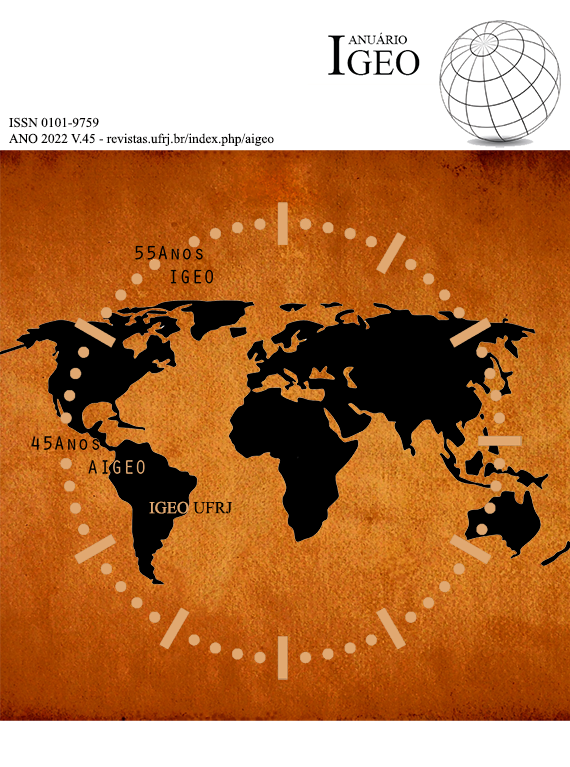Mineralogy of Palygorskite Occurrences from Guadalupe, Piauí, Parnaíba Basin
DOI:
https://doi.org/10.11137/1982-3908_2022_45_46268Palavras-chave:
Clay minerals, Fibrous clay, Applied mineralogyResumo
Palygorskite is a clay mineral with structural units forming ribbons, whose economic importance is directly related to its unusual structure and physicochemical properties, which give it a wide variety of uses in industry. The formation stability field of palygorskite is very limited, which makes deposits of this clay rare around the world. In Brazil, the only exploitable deposits of this mineral are located in the municipality of Guadalupe, Piauí state, inserted in the geological context of the Parnaíba Basin, specifically in the Carboniferous and Permian sequence represented by the Piauí, Poti and Pedra de Fogo formations. The objective of this study was the geological and mineralogical description of palygorskite occurrences in the Guadalupe region. Six occurrences were studied, and 25 samples were collected. These raw samples were processed to concentrate particles with size smaller than 44 µm. XRD, SEM/EDS, density and particle size analysis were performed. Most of the samples were composed of palygorskite, quartz and kaolinite; however, according to the diffractograms, there are three samples with the absence of palygorskite, two with the absence of kaolinite and one with presence of dolomite. From these results, it is possible to correlate hypotheses for palygorskite formation with the local geological context. The environmental conditions of Piauí and Pedra de Fogo formations were favorable to this clay mineral formation, the association of dolomite and palygorskite in an upper layer may indicate a greater association with Pedra de Fogo Formation, however the field descriptions, as the levels of silexite, and the analyses results are not enough to define in which one of these formations the occurrences of palygorskite are inserted.
Downloads
Arquivos adicionais
Publicado
Edição
Seção
Licença
Os artigos publicados nesta revista se encontram sob a llicença Creative Commons — Atribuição 4.0 Internacional — CC BY 4.0, que permite o uso, distribuição e reprodução em qualquer meio, contanto que o trabalho original seja devidamente citado.
















 Exceto onde indicado de outra forma, o conteúdo deste site é licenciado sob uma licença
Exceto onde indicado de outra forma, o conteúdo deste site é licenciado sob uma licença 